#Demographic Segmentation
Text
Understanding Consumer Behavior in Marketing: Patterns, Types, and Segmentation
Explore the intricate world of consumer behavior in marketing. Uncover patterns, types, and segmentation strategies to gain valuable insights and tailor your marketing efforts effectively.
#Consumer behavior in marketing#Patterns in consumer behavior#Types of consumer behavior#Segmentation in marketing#Marketing strategies#Consumer psychology#Behavior patterns#Consumer preferences#Target audience#Customer segmentation#Buyer behavior#Market research#Marketing insights#Consumer trends#Demographic segmentation#Psychographic profiling#Marketing effectiveness#Consumer buying behavior#Market segmentation techniques#Customer segmentation strategies
0 notes
Text






#The Simpsons#Just platforming a tragically underrepresented segment of the oldest kid demographic (irresponsible scamp)
58 notes
·
View notes
Text

Discover population demographics, real estate value, and lifestyle segmentation with Census maps. Get insights into your target market for better decision-making.
0 notes
Text
AD Vantage Loyalty Program Services
AD Vantage is a loyalty program company that helps businesses to retain their customers and drive revenue growth. We provide businesses with the tools and strategies they need to develop and manage effective loyalty programs, which reward customers for their repeat business and incentivize them to be loyal.
Designing and implementing loyalty programs: AD Vantage work with businesses to design and implement loyalty programs that are tailored to their specific needs and goals. We help businesses to determine what rewards and incentives will be most effective in encouraging customer loyalty, and they create the systems and processes needed to manage and track the program.
Data analytics: AD Vantage uses data analytics to track customer behavior and measure the effectiveness of loyalty programs. By analyzing customer data, we identify trends and patterns that help businesses to better understand their customers and develop targeted marketing campaigns.
Customer engagement: Our loyalty programs also play a role in engaging customers and encouraging them to participate in the loyalty program. They create marketing materials and campaigns that promote the benefits of the program, and they provide customer support to help customers understand how to participate.
Technology solutions: The loyalty programs of AD Vantage provide technology solutions that allow businesses to manage their loyalty programs, track customer behavior, and measure program effectiveness. These solutions may include software platforms, mobile apps, and other digital tools that make it easy for businesses to manage and track their loyalty programs.
Customer segmentation: We help businesses segment their customers based on demographics, purchase history, and other factors. This allows businesses to target specific customer groups with personalized rewards and incentives that are more likely to appeal to their interests and needs.
Customer feedback: AD Vantage provide businesses with tools to collect customer feedback, which can be used to improve the loyalty program and other aspects of the customer experience. This feedback can be collected through surveys, reviews, and other methods, and can provide valuable insights into customer preferences and behaviors.
Partnership and alliances: Our loyalty program can help businesses form partnerships and alliances with other companies to offer joint loyalty programs. This can expand the reach of the loyalty program and offer customers more options for rewards and incentives.
customerloyaltyprograms
loyaltyschemes
customerloyaltyprogram
#https://advan.in/loyalty-programs/#AD Vantage is a loyalty program company that helps businesses to retain their customers and drive revenue growth. We provide businesses wit#which reward customers for their repeat business and incentivize them to be loyal.#Designing and implementing loyalty programs: AD Vantage work with businesses to design and implement loyalty programs that are tailored to#and they create the systems and processes needed to manage and track the program.#Data analytics: AD Vantage uses data analytics to track customer behavior and measure the effectiveness of loyalty programs. By analyzing c#we identify trends and patterns that help businesses to better understand their customers and develop targeted marketing campaigns.#Customer engagement: Our loyalty programs also play a role in engaging customers and encouraging them to participate in the loyalty program#and they provide customer support to help customers understand how to participate.#Technology solutions: The loyalty programs of AD Vantage provide technology solutions that allow businesses to manage their loyalty program#track customer behavior#and measure program effectiveness. These solutions may include software platforms#mobile apps#and other digital tools that make it easy for businesses to manage and track their loyalty programs.#Customer segmentation: We help businesses segment their customers based on demographics#purchase history#and other factors. This allows businesses to target specific customer groups with personalized rewards and incentives that are more likely#Customer feedback: AD Vantage provide businesses with tools to collect customer feedback#which can be used to improve the loyalty program and other aspects of the customer experience. This feedback can be collected through surve#reviews#and other methods#and can provide valuable insights into customer preferences and behaviors.#customerloyaltyprograms#loyaltyschemes#customerloyaltyprogram
0 notes
Text
We need to be able to discuss the conditions of trans people who want, need, or are already doing medical transition without first apologizing to everyone outside of that demographic.
The men, the women, the nonbinary people, the genderqueer ones, the genderfluid ones, the xenogender ones. The ones who are repressing the need so hard that it's fucking with their memory. The ones who downplay it into just a "want" and think they'll be taking up resources. The ones who've stabilized to a point where they just need the supply of hormones to stick around. The ones who have to worry about customs every time they place the order. The ones who've had to take on crushing debt to afford life-saving surgeries. The ones who didn't have that chance and spend their free time fundraising for themselves. The ones who sit through hours of painful electric shocks to their faces and will have to keep doing it for the foreseeable future until the hairs are gone.
The nonbinary people whose medical needs are so downplayed even in trans communities that some of you fuckers think centering medical transition is inherently enbyphobic. The nonbinary people who have to lie to their doctors to get help in a medical system that thinks their needs are somehow intrinsically different from those of binary trans people. The nonbinary people who need medical interventions that exist but are unavailable due to nothing but institutional negligence.
The young transitioners who've never lived as anything other than their gender, at risk of having to go through the wrong puberty because the sentiment that you could just be gender nonconforming instead is being wielded in texts such as the Cass review to justify the suppression of medical transition.
The group of trans people with transition-related medical needs is a huge segment of the trans community that is seriously vulnerable to political attacks, denied support of any kind in large parts of the world, and for some absolutely terminally online reason expected to walk on eggshells to avoid coming off as transmedicalist.
Some transmedicalists on the internet are mean sometimes. Get the fuck over it and recognize the form that attacks on the trans community are taking now, before the nonmedical form of transness is forced to become the only available option, and then targeted for further suppression.
564 notes
·
View notes
Text
Kate Mulgrew on the way Janeway looks at Seven of Nine: "And I mean, honestly, if you remember Janeway looking at her boots and traveling up the body, I remember that. . . . So to be honest with you, for the first season that I worked with her, I was just staring at her bosoms."
Here's the whole segment:
In the fifth season, an actress was brought onto Star Trek: Voyager by the name of Jeri Ryan, who played the character of Seven of Nine, and she was absolutely stunning.
And she represented sex. I mean, it was absolutely crystal clear. And I mean, honestly, if you remember Janeway looking at her boots and traveling up the body, I remember that.
Now, I was of two minds, 'cause there's nobody in the history of television series who doesn't want their series to be successful. So I understand the need for sex.
But I had hoped against hope that I could bring it in as Janeway without it. I didn't.
I mean, I went to them in the first season and said, "I'm not having sex. I'm not saying, 'Red alert: into my ready room, Chakotay, let's go, let's go, let's go.' I'm not doing that. I have a complement of 165, I've got to get them home, and what? The captain's shtupping again?" You know? And it makes no sense at all.
So Seven of Nine appears, and she's half-human, and she's half-Borg, and she's [makes noise while waving her hands in an hourglass figure]. Right? So to be honest with you, for the first season that I worked with her, I was just staring at her bosoms. Her remarkable figure.
And then I understood that they wanted it to be a mother-daughter thing, but my daughter doesn't look like that. My daughter looks like a beautiful human being. It was a thing of bringing the male demographic. And it was very successful. They certainly liked to watch Seven of Nine, and I don't blame them. Men like that, don't you? Don't you?
—ubookstore, "University Book Store Presents Kate Mulgrew," YouTube, May 31, 2019, https://www.youtube.com/watch?v=4X2cverYupQ.
The question begins around 51:32.
193 notes
·
View notes
Text
What Is Market Research: Methods, Types & Examples
Learn about the fundamentals of market research, including various methods, types, and real-life examples. Discover how market research can benefit your business and gain insights into consumer behavior, trends, and preferences.
#Market research#Methods#Types#Examples#Data collection#Surveys#Interviews#Focus groups#Observation#Experimentation#Quantitative research#Qualitative research#Primary research#Secondary research#Online research#Offline research#Demographic analysis#Psychographic analysis#Geographic analysis#Market segmentation#Target market#Consumer behavior#Trends analysis#Competitor analysis#SWOT analysis#PESTLE analysis#Customer satisfaction#Brand perception#Product testing#Concept testing
0 notes
Note
I recently learned that bisexuals have higher rates of poverty than gay and lesbian folks -way higher, actually. Do you know of any study or essay that goes into the possible causes? I can only find sources describing the problem, none actually hypothesizing
Nobody knows why, but there are a few competing theories. I think what most of the reports on this subject fail to take into account is that bisexuals are a larger segment of the population than either lesbians or gay men -- and so we're really comparing apples to oranges here, in terms of demographic size and perhaps even variance. Bisexuals are the largest LGBT group and we may see a greater statistical diversity of outcomes within that group than in others.
The prevailing explanation that I've seen is that bisexuals are less likely to find a community "home" -- their identity is less socially legible and visible and so they may be less likely to access LGBTQ resources, forge community ties, or even to really recognize themselves as a member of the community deserving of such things. Not knowing yourself or your people while still being marginalized can be really damaging.
Bisexuals also face the dual vulnerability of both being queer and potentially being in romantic relationships with straight people who are homophobic and will retaliate against them for their queerness. The domestic violence and sexual assault vulnerabilities bisexuals face are doubtless related to their economic outcomes.
Sometimes, these dynamics get misreported as gay men and lesbians oppressing bisexuals, but that's not really the mechanism at work here. It's relationships with cishet men. I believe it was Butchanarchist who pointed out that lesbians face the same rate of domestic violence as bisexual women when they're in relationships with men. Of course, fewer lesbians on average are in relationships with men. So in reality it's the on-average greater proximity with and vulnerability to cishet people that bisexuals tend to suffer from. Gay men and lesbians are sometimes (but far from always!) able to get more distance from their oppressors than bisexuals are. But the oppressors in both cases are the same.
170 notes
·
View notes
Text

Discover population demographics, real estate value, and lifestyle segmentation with Census maps. Get insights into your target market for better decision-making
#Lifestyle Segmentation#lifestyle segmentation report#lifestyle segmentation analysis#Lifestyle Demographics Segmentation
0 notes
Text

How can RideBoom leverage customer segmentation to tailor its pricing strategy for different user groups?
Here are some ways RideBoom can leverage customer segmentation to tailor its pricing strategy for different user groups:
Demographic Segmentation: RideBoom can segment its customers based on factors like age, income, and location. This can help them offer different pricing options tailored to the needs and willingness to pay of each demographic group. For example, they could offer discounted rates for students or seniors, while charging higher prices for business travelers.
Behavioral Segmentation: RideBoom can analyze customer usage patterns, such as frequency of rides, preferred ride types (e.g. economy vs. premium), and peak vs. off-peak usage. This can inform dynamic pricing strategies that adjust rates based on demand, rewarding loyal/frequent riders with discounts while charging higher prices during peak hours or for last-minute bookings. [1]
Psychographic Segmentation: RideBoom can segment customers based on their lifestyle, values, and priorities. This could involve offering specialized packages or add-ons tailored to different customer segments, such as eco-conscious riders, families, or nightlife enthusiasts. Pricing can be adjusted accordingly to match the preferences of each group. [2]
Tiered Pricing: RideBoom can implement a tiered pricing structure with different service levels and corresponding prices. This could include basic economy rides, premium rides with additional features, and even luxury options. Customers can then choose the level of service and pricing that best fits their needs and budget. [3]
Loyalty Programs: By offering loyalty programs, RideBoom can segment customers based on their engagement and reward the most valuable users with exclusive pricing benefits, such as discounted subscription plans or credits for frequent riders. This can help increase customer retention and lifetime value. [3]
Overall, RideBoom can leverage a combination of these customer segmentation strategies to develop a more nuanced and effective pricing approach that caters to the diverse needs and preferences of its user base, ultimately driving increased revenue and customer satisfaction.
#delhi rideboom#rideboom app#rideboom#ola cabs#rideboom taxi app#biketaxi#uber#ola#uber driver#uber taxi
47 notes
·
View notes
Text
Let’s Be Honest He Appeals To Women A Different Way
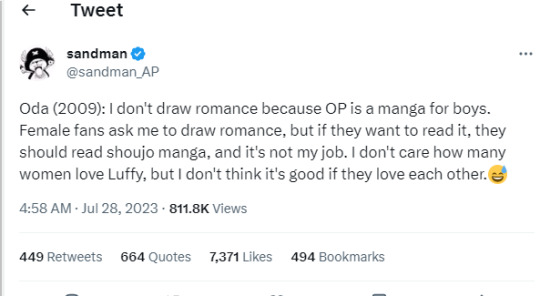
People call Oda Oda sexist, but in my opinion focusing on his target demographic isn’t bad. Girls aren’t excluded but I think it’s good he’s not automatically pandering to them through romance because in my opinion if he did those elements would feel forced in this show. And I think unintentional pandering to your unintended audience tends to be better than when you intentionally do so and it could potentially turned off that segment.

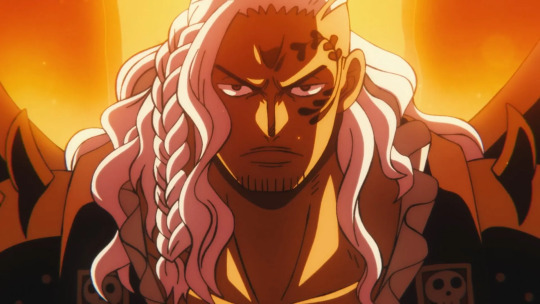

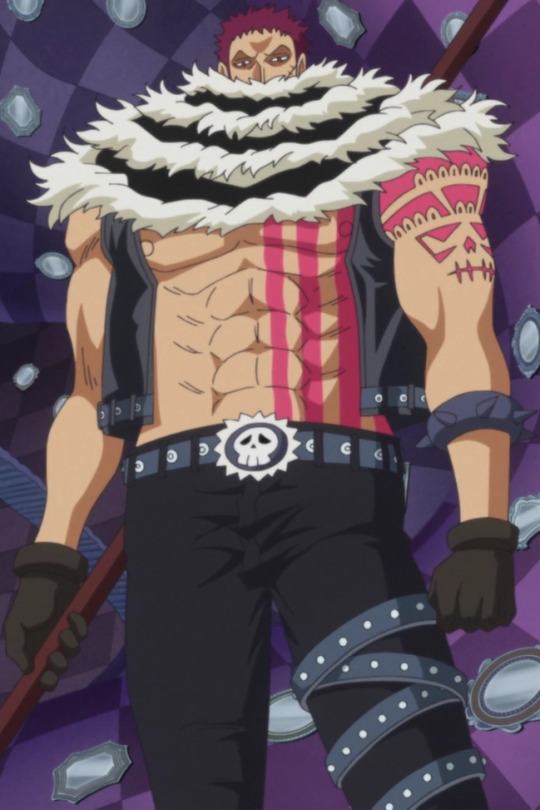
The most obvious attraction that women have to this series is the dilf hot males, especially the villains. Seriously, it’s really the most unintentional of pandeirng that Oda creates these types of villains and the female audience eats it up. While most shonen series focuses on hot young men, this series give attraction to old men as well and we female fans are eating it all up.
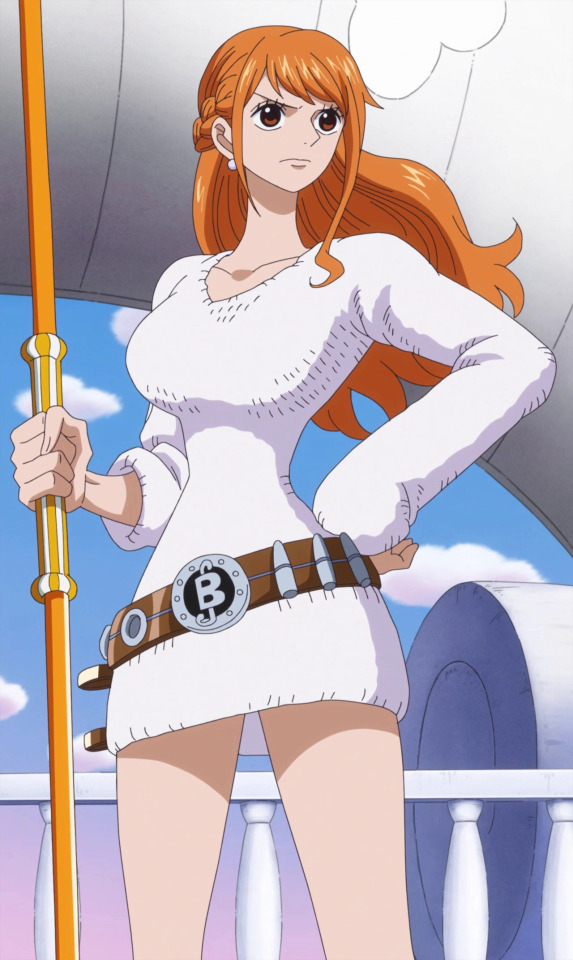
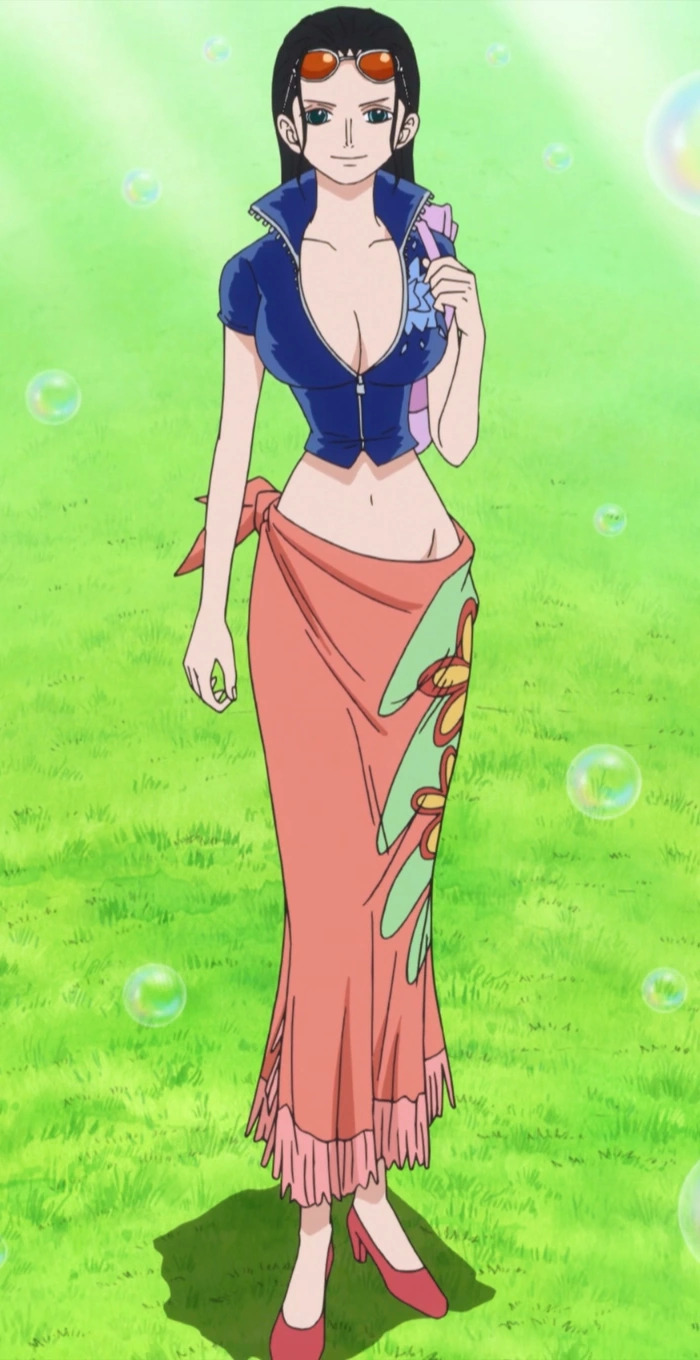
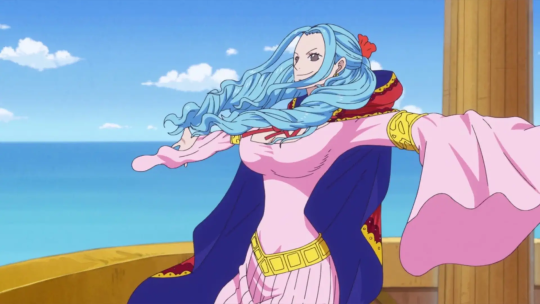
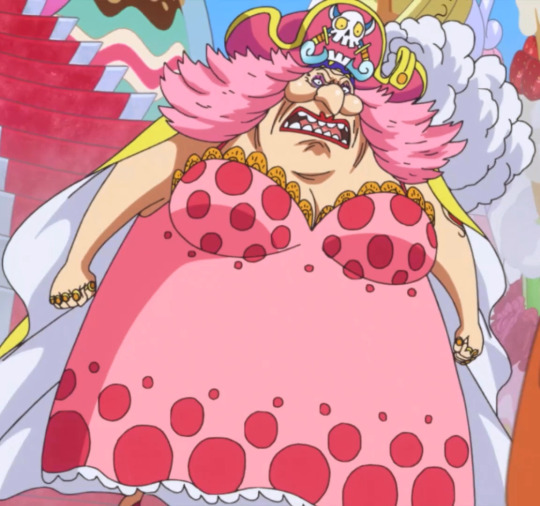
And again the female characters, despite the criticisms of same character mold I do think when it comes down to it excluding romance has helped. Seriously, while on the surface level the latter three are attractive and used for fan service, Oda does his best to also flesh out their characters. For instance, Nami and Robin are different types of smart guys on the crew and are critical to helping Luffy on his journey by traveling safely through the world and knowing the secrets about the messages of the Poneglyphs. In my opinion, it makes them stand out to me because they serve more than fanservice but also as people who have their place in the story. They might not get as much fights, but they manage to be strong female characters in their own right.
Another is Vivi who isn’t the strongest fighter but has the strongest spirit and has taken on evil organizations and now the government itself to stand up for what she believes is right. Vivi might not be an official member but she is in spirit a close secret ally of the crew and her presence really brought a great dynamic from the crew that makes them all still miss her being around.
And finally Big Mom why is she on this list, because interesting enough Oda could have just made her a one dimensional fat fuck, but instead he made her a complex character even though she’s a villainess. And even though everything she’s gone through is not an excuse for her behavior, it still makes her a compelling character to read because again someone like her ended up this way because so many people wanted to use her and enable her worst qualities for their selfish ends. And in the end we have a woman who not only can’t emphasize with people and feels entitled to everything due to how she was taught to see the world. In my opinion Oda, didn’t have to do this but I am glad and it makes antagonists like her very happy to see.

And again even though One Piece isn’t about romance, it really gives compelling canon couples some spotlight. Seriously, one of them is Capone and Chiffon, who you wouldn’t think make a wholesome couple but they do. He seriously showers this woman who was so abused by her mother for what her sister did and adores the son they have together. He even goes up against her brother who was going to kill her even though she pleaded to leave her. This guy really does love his wife and would anything for her like a real man would. And again in my opinion, lovey dovey romance is something Oda will never do but I admit I think any woman would want a man like Capone to stand up for her like that. And in my opinion, if you ever see a married couple in this franchise you will bet your ass that married couple will have something deep and lasting. With exceptions being Yassop and Big Mom herself.
#one piece#one piece oda#oda#big mom#vivi#king the wildfire#sir crocodile#doflamingo#charlotte katakuri#nico robin#nami#capone pez#capone bege#charlotte chiffon#charlotte linlin
262 notes
·
View notes
Text
Hit my subscription renewal date - Thoughts Part 2
At this point, my subscription to Netflix is functionally a subscription to Dead Boy Detectives.
That's partly because I really, really love the show -- and I do! Partly because I've been rewatching the show as much as I reasonably can in hopes of supporting the fandom as we hope to change Netflix's mind about the cancellation. And partly because -- for a lack of time, to get a point across, out of stubbornness / spite -- I haven't been watching anything else on Netflix since the cancellation.
My Basic subscription was recently dropped, and before the cancellation news, I was actually telling myself that the forced move to new plan would have an upside, because this show is one of the very few things that have made me wish I had that higher resolution subscription.
I want to see all the details, and it feels rewarding to notice little things in the show, like the plaque on the moose bobblehead in Episode 2, or the wording on the label on the black salt, or the different ways that Esther accessorizes with the evil eye necklace that she wears constantly. I've paused the show so many times to get a better look at things, and it's almost always been rewarded.
And also, before the cancellation news, I thought that I would give "with Ads" a try for at least a couple of weeks, to see if I could live with it, since I couldn't keep my Basic plan.
But I can't imagine, now that rewatching the show is part of my routine, having ads pop on in between scenes. (It would very much be a "flames on the sides of my face" situation if they messed with the timing and transitions of the show at this point. I don't feel like this is a show that is written to have ad breaks.)
And that's not even counting the whole targeted ad situation I talked about in my previous post.
Because of this show and this fandom, I'm watching more Netflix right now than ever. (I'd previously have bursts of watching, at most, a few 22-minute episodes a day while I cooked, followed by weeks of nothing as I watched shows on another service. Now I'm averaging at least 14 hours a week, while I do other things.)
Now, I'm renewing so I can keep up the rewatches (round 12 right now!), and in hopes that Netflix, too, might choose to renew (hint, hint).
But frankly, I'm considering my options, in the event that they don't.
If there's ever an official DVD/BluRay release, I'm going for it. (Very much hoping that Warner Brothers will put one out; what can I say, we're a passionate fanbase, and at the very least I hope they'd see that it would be worth it for them to do so.)
And if there's no hope of further seasons, I can't see myself keeping up a subscription full time. I'm sure I'd want to come back and visit the shows that I already like that have ended, but I don't think I'd have any motivation to try to keep up with anything new that's exclusive to Netflix as it comes out. What would be the point?
(Since the cancellation, I've learned about multiple Netflix shows I've never heard of before that sound interesting to me. I've heard about them specifically because they have also been cancelled -- and because Netflix's recommender thinks I'd be interested in them since I like Dead Boy Detectives. The fact that they have multiple recently cancelled but well-received shows in that segment seems somewhat damning.)
If I do drop back to part-time, I don't think I'd be coming back for enough time to make up the revenue they'd lose compared to the last price point, so that, too, seems like a loss for Netflix. (For the cost of a year's subscription at the last price point for Basic, I can manage almost 8 months of Standard. But I'm not sure I'd be coming back for 8 months at a time, if I knew I wasn't planning to stick around.)
Maybe I'm not the customer that Netflix is thinking of. Maybe I'm not the demographic that they want, or I'm not motivated by the same things that they think I should be.
But for a service that wants steady revenue and is concerned about cancellation/subscription churn, Netflix has been making some odd choices lately, as far as I'm concerned.
#dead boy detectives#save dead boy detectives#renew dead boy detectives#rant#my posts#long post#mad at netflix#but also#tired and disappointed
22 notes
·
View notes
Note
I was reading some old Reylo posts and came across a user on here saying that even if Rian Johnson had directed TROS, it still would've been bad, because of interference from higher ups (Rey Skywalker was a consistent theme across the two scripts - but imo, I think that might've just been because they were collectively mad she wasn't a Skywalker lol).
If this isn't an annoying and tiresome question, what do you think? It's hard to speculate but I do find it a bit fun, because there's always been that 'what if' for me that if Rian had done it, maybe it wouldn't have been awful... I guess the implication here is that, was TROS always going to be bad?
I'm ruminating on it a bit because it seems like Disney has kind of segmented the SW fanbases across their shows - Prequel stuff, worldbuilding stuff, OT stuff, and now the romance/Force storyline stuff. All of these combined elements is what made SW so potent, what made something like Reylo so powerful, but it's what makes it a hard brand to sell.
What we heard was that Kennedy asked Rian to do it, but he said he needed more time to write the script and Iger/DLF was unwilling to move the release date. I'm not sure how verified that ever was, but it's the most depressing fucking thing imaginable if true. The same short-term only, immediate profit and your quarterly bonus over the integrity of the company and the franchise which has been destroying Disney as a studio over the last decade or so.
I do think the most blame for tros must ultimately rest with Iger, but it's not like that absolves JJerio from responsibility for how bad it actually is.
I have answered this exact question before, and speculated on related stuff a few times, but unfortunately I haven't been able to find that post for you.
To me, if we learnt anything from DotF being a thing, it's that there was never anyone at the wheel, plotgate was totally true, and the directors were allowed to do whatever they wanted. If Rian had been making the third film from the start, I don't think they would have tried to impose any major story beats on him. The reason it became such a shitshow was The Book of Henry came out and they realised Colin's script was totally unacceptable way too late.
And once the can of meddling was open and you're back to JJ 'no thoughts, head empty' Abrams as a workman director, the suits were basically writing epIX with Terrio's incest fever dreams as connective tissue. They kept elements from Colin's version because they were trying to save time and use as much of the work which had already been done as possible. There was no commitment to any of those ideas, it's just incompetence and with no direction or ideas of their own, they were making a reddit checklist to try to please the whiners rather than writing any actual story.
Like, none of this would have happened if Rian were involved, because Rian would have written an actual story.
SW is mythology and very few people working at DLF seem to have ever understood that or have any idea what it means. Disney has segmented it because that's what they know, they want to have different product to sell to different demographics to maximise saturation and profit. That's their business model. They don't understand the foundation, the Saga itself, and its universal appeal, they seem content to let that stay dead and focus on compartmentalising and pandering to smaller, separate audiences.
33 notes
·
View notes
Text
But what exactly is it about women's equality that even its slightest shadow threatens to erase male identity? What is it about the way we frame manhood that, even today, it still depends so on "feminine" dependence for its survival? A little-noted finding by the Yankelovich Monitor survey, a large nationwide poll that has tracked social attitudes for the last two decades, takes us a good way toward a possible answer. For twenty years, the Monitor's pollsters have asked its subjects to define masculinity. And for twenty years, the leading definition, ahead by a huge margin, has never changed. It isn't being a leader, athlete, lothario, decision maker, or even just being "born male." It is simply this: being a "good provider for his family."
If establishing masculinity depends most of all on succeeding as the prime breadwinner, then it is hard to imagine a force more directly threatening to fragile American manhood than the feminist drive for economic equality. And if supporting a family epitomizes what it means to be a man, then it is little wonder that the backlash erupted when it did—against the backdrop of the '80s economy. In this period, the "traditional" man's real wages shrank dramatically (a 22 percent free-fall in households where white men were the sole breadwinners), and the traditional male breadwinner himself became an endangered species (representing less than 8 percent of all households). That the ruling definition of masculinity remains so economically based helps to explain, too, why the backlash has been voiced most bitterly by two groups of men: blue-collar workers, devastated by the shift to a service economy, and younger baby boomers, denied the comparative riches their fathers and elder brothers enjoyed. The '80s was the decade in which plant closings put blue-collar men out of work by the millions, and only 60 percent found new jobs—about half at lower pay. It was a time when, of all men losing earning power, younger baby-boom men were losing the most. The average man under thirty was earning 25 to 30 percent less than his counterpart in the early '70s. Worst off was the average young man with only a high-school education: he was making only $18,000, half the earnings of his counterpart a decade earlier. Inevitably, these losses in earning power would breed other losses. As pollster Louis Harris observed, economic polarization spawned the most dramatic attitudinal change recorded in the last decade and a half: a spectacular doubling in the proportion of Americans who describe themselves as feeling "powerless."
When analysts at Yankelovich reviewed the Monitor survey's annual attitudinal data in 1986, they had to create a new category to describe a large segment of the population that had suddenly emerged, espousing a distinct set of values. This segment, now representing a remarkable one-fifth of the study's national sample, was dominated by young men, median age thirty-three, disproportionately single, who were slipping down the income ladder—and furious about it. They were the younger, poorer brothers of the baby boom, the ones who weren't so celebrated in '80s media and advertising tributes to that generation. The Yankelovich report assigned the angry young men the euphemistic label of "the Contenders."
The men who belonged to this group had one other distinguishing trait: they feared and reviled feminism. "It's these downscale men, the ones who can't earn as much as their fathers, who we find are the most threatened by the women's movement." Susan Hayward, senior vice president at Yankelovich, observes. "They represent 20 percent of the population that cannot handle the changes in women's roles. They were not well employed, they were the first ones laid off, they had no savings and not very much in the way of prospects for the future." Other surveys would reinforce this observation. By the late '80s, the American Male Opinion Index found that the largest of its seven demographic groups was now the "Change Resisters," a 24 percent segment of the population that was disproportionately underemployed, "resentful," convinced that they were "being left behind" by a changing society, and most hostile to feminism.
To single out these men alone for blame, however, would be unfair. The backlash's public agenda has been framed and promoted by men of far more affluence and influence than the Contenders, men at the helm in the media, business, and politics. Poorer or less-educated men have not so much been the creators of the antifeminist thesis as its receptors. Most vulnerable to its message, they have picked up and played back the backlash at distortingly high volume. The Contenders have dominated the ranks of the militant wing of the '80s antiabortion movement, the list of plaintiffs filing reverse-discrimination and "men's rights" lawsuits, the steadily mounting police rolls of rapists and sexual assailants.
-Susan Faludi, Backlash: the Undeclared War Against American Women
55 notes
·
View notes
Text
Lol, posting this even though I’m feeling paranoid because a week ago an anon asked me what I thought her rebrand should look like and I said she should go full coastal grandmother style and have more fun outings with friends.
Then she immediately had “sightings” at the Barbie movie and the TS concert, and now she’s in beiges and blues. Coincidence? I hope so.
But I don’t think it’s a bad strategy. I’m guessing she has a deal with that calming patch company, and that’s not a bad partnership for someone who’s main claim to fame is a high-profile suicide attempt. Going the woo-woo route is also a good idea because she’s very articulate but not very smart. She can’t discuss policy or complicated ideas, but she can do a mean wellness word salad. Can she compete with Gwyneth, though? I think not. I think she’s better off aiming for a less rarefied clientele than Goop’s.
I would advise her to tone down the luxury brands because these many labels for a casual visit screams rabid insecurity. She needs fewer items and some mid-level brand deals.
She also need to narrow her target. The Barbie and TS leaks increase her SEO, but that’s not her target audience. She should focus her press on books, wine, and other areas that interest the wealthy middle-aged women she’s targeting. Barbie, TS, and the rom com she’s working on skew too young. She needs to hit that Eat Pray Love demographic. She should get a good market segmentation report done.
But not a bad start. Definitely better than what she had before.
Meanwhile, Harry is now dedicating his life to charity. So much for Hollywood domination.
123 notes
·
View notes
Text
It's really cool to see the continued growth of F1 reporting, commentary (or in this case comedy) by people who weren't traditionally considered the F1 target demographic (aka white men).
This was a segment on Australian TV featuring comedian and writer Scout Boxall (on ABC's The Weekly) and when it was posted on ABC's instagram the comment section was absolutely completely vile; the vast majority of comments were mocking her appearance, or how because Scout mentions her pronouns in her bio that meant she had no right commenting on F1. The comments have since been turned off, but unfortunately the whole incident highlights the continued belittling of F1 fans who don't fall into the 'traditional mainstream' audience and how unwelcoming the F1 community can still be for so many fans.
I thought I would share it, because I really enjoyed seeing an F1 correspondant/reporter who wasn't a white man and who seemed to have such genuine enthusiasm and enjoyment for the sport. I'm not sure how well the humour/sarcasm will translate for non-aussie viewers, but I thought maybe other people might enjoy watching it as much as I did.
via: Scout Boxall instagram
29 notes
·
View notes